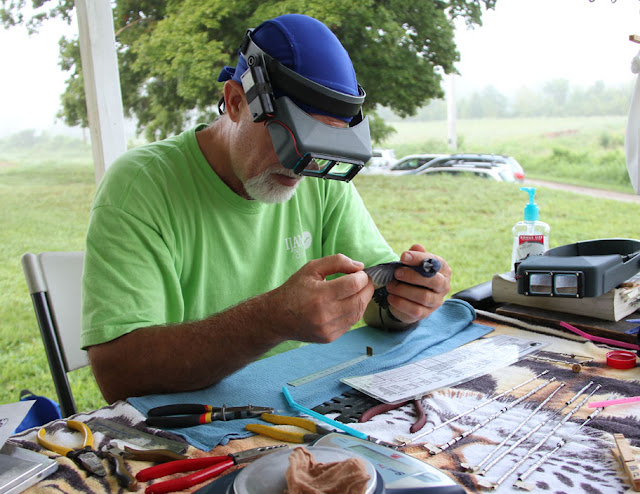Butterflies, flowers and hummingbirds--the fun and easy to see colors of late summer.
Male Eastern Tiger Swallowtail, above and below on phlox. Both hummingbirds and butterflies visit phlox.
Swallowtails are our largest butterflies in North America, and one of the most obvious because of their beautiful colors. The male is always yellow, as shown in the above images. The female can be either yellow or black. But their large size and obvious color doesn't mean you can't discover a new species in the swallowtail family.
Only seven years ago, a brand new eastern swallowtail species was discovered and categorized, the Appalachian Tiger Swallowtail. Though very similar in appearance, amazingly, this species is even large than the Eastern Tiger Swallowtail and has a wider band of blue on its under-wings. Visit the link to see the size difference and other more subtle differences between the two species: Appalachian Tiger Swallowtail
The "warbler of butterflies", the skipper is usually a comparatively drab family of butterflies and its often difficult to separate the species. The male Zebulon Skipper, however, is more brightly colored and it was fun to discover this male visiting my purple lantana, above and below.
This is also the time of years we enjoy an increase in hummingbird activity. If you aren't seeing many, "put out more feeders" coached Bob Sargent at our recent hummingbird festival in Knoxville. And it's true. Add more flowers and more feeders and the hummingbirds will come. Below, a mature male ruby-throat. Did you know the ruby-throated male has black chin feathers? Check the image. This is not the shifting of light on iridescent feathers. His red gorget begins right below his black chin.
By this time in August, hummingbirds from the north are already moving southward and local juveniles have fledged and are frequenting feeders. Even those rare species that we sometimes find here in the winter are already arriving now. The most common of these is the Rufous hummingbird, but Black-chinned hummingbirds, Allen's, Anna's and others have also been discovered migrating and wintering in the east, and sometimes they arrive as early as August.
I enjoyed participating in a hummingbird banding session with Mark and Jane Armstrong recently and tried my hand at recording the data. Jane was busy capturing and retrieving hummingbirds from the traps and Mark, who is a Master Bander in both song birds and hummingbirds, banded and processed the birds. In a two hour period, 40 ruby-throated hummingbirds were processed with 32 newly banded and 8 recaptured.
Above you see a male ruby-throat in heavy molt. The white streaks you see are pin feathers where new feathers are growing. And below a recently fledged juvenile showing his bright yellow mouth as he chirps in protest. He was skillfully banded, health evaluated, and released.Upcoming: Getting ready for Alaska--in seven days!
Links and Resources:
My blog posts on Hummingbird banding. Visit this post to read the various species that have been documented in the east during fall and winter months.
Hummingbird Study Group
Appalachian Tiger Swallowtail
Eastern Tiger Swallowtail
Skippers



































